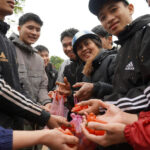A Century-Old Heritage in the Heart of the Stone Plateau
Dong Van Market, nestled in the heart of Ha Giang, boasts a history of almost a century. Constructed between 1925 and 1928 during the French colonial period, its original architecture showcased a unique blend of Vietnamese and Chinese cultural influences, featuring a distinctive U-shaped structure. The market’s most impressive feature are its massive stone pillars, each weighing several tons, intricately pieced together, standing over 4 meters tall, and requiring three to four people to encircle.
These pillars, intricately carved with exquisite patterns, stand as a testament to the masterful craftsmanship of bygone eras.
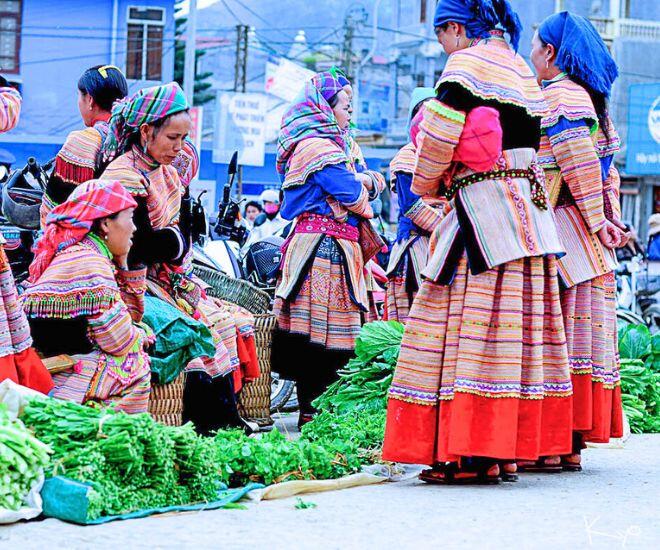
Nestled at the foot of Don Cao Mountain and surrounded by the majestic Dong Van Stone Plateau, a UNESCO-recognized global geopark, the market resembles a gem amidst breathtaking natural scenery. The region’s topography resembles a “basin,” with towering limestone mountains creating a landscape that is both rugged and poetic.
Prior to 2018, the Dong Van Market was located near the ancient town of Dong Van, amidst rows of imposing stone pillars. However, to accommodate expansion needs, the market was relocated to a new site with a modern concrete structure while striving to maintain its traditional ambiance. While this change provided more space, it also diminished the market’s antique charm, leaving many visitors with a sense of nostalgia.
A Convergence of Ethnic Cultural Colors
Every Sunday morning, the Dong Van Market buzzes with activity as ethnic groups such as the Mong, Dao, Tay, Nung, and Hoa congregate in their vibrant traditional attire. The market commences at dawn, when mist still blankets the valley, and concludes around 10 a.m.
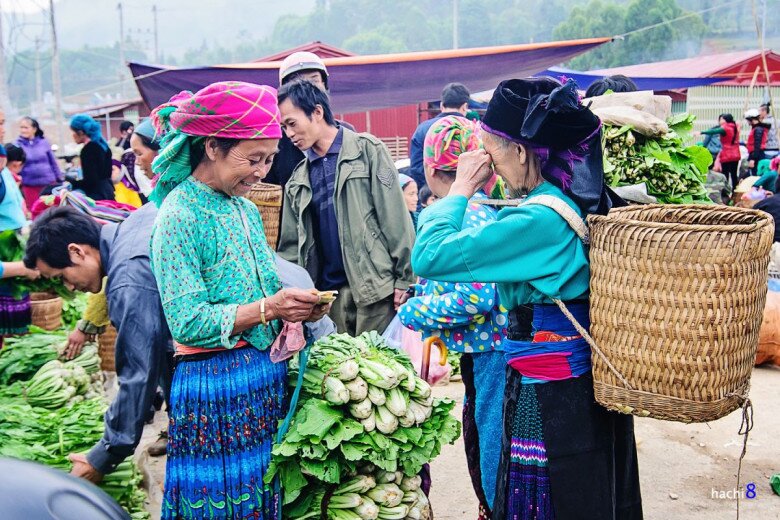
The market’s allure stems from its diverse array of goods and unique cultural offerings. Visitors can admire the intricate embroidery of the Mong and Dao people’s textiles, including indigo-dyed linen, colorful bags, and traditional costumes. Alongside these are displayed agricultural tools such as hoes, shovels, and machetes, reflecting the indigenous community’s agrarian lifestyle.
One of the market’s most distinctive features is its livestock section, where buffaloes, cows, pigs, and chickens are traded. A unique offering is the “piglet under the arm”—a small pig breed reared in the wild—which the Mong people bring to the market in dangling baskets. Additionally, the market offers precious medicinal herbs from the highlands, such as ginseng and angelica, and the renowned Ha Giang mint honey, sourced from the region’s silver flower forests.
Gourmet Delights of the Highlands
The culinary delights of the Dong Van Market showcase a unique fusion of forest flavors and traditional cooking techniques. “Thang co,” the emblematic dish of the stone plateau, is prepared using offal and meat from cows, horses, or goats, slow-cooked with distinctive spices like wild pepper, lemongrass, and ginger. This savory stew is typically accompanied by forest herbs and a spicy dip, creating an unforgettable flavor profile.
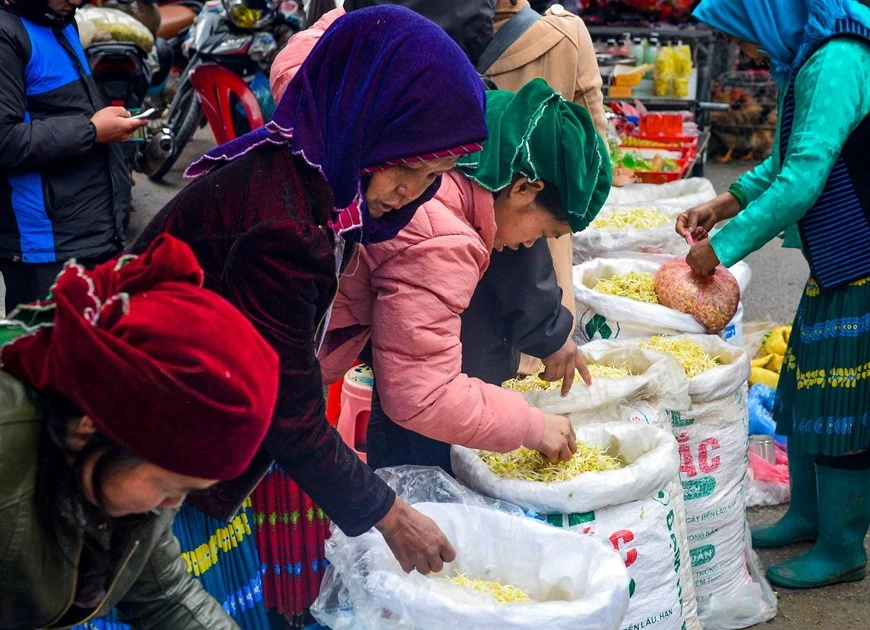
Ha Giang corn wine, with its pungent aroma derived from leaf yeast, is an indispensable beverage at the market. Visitors can savor this wine, served in traditional earthenware jars, or purchase it as a souvenir. Other culinary delights include “men men” (steamed corn flour), triangle flower cake (made from the region’s iconic flower), and five-color sticky rice.
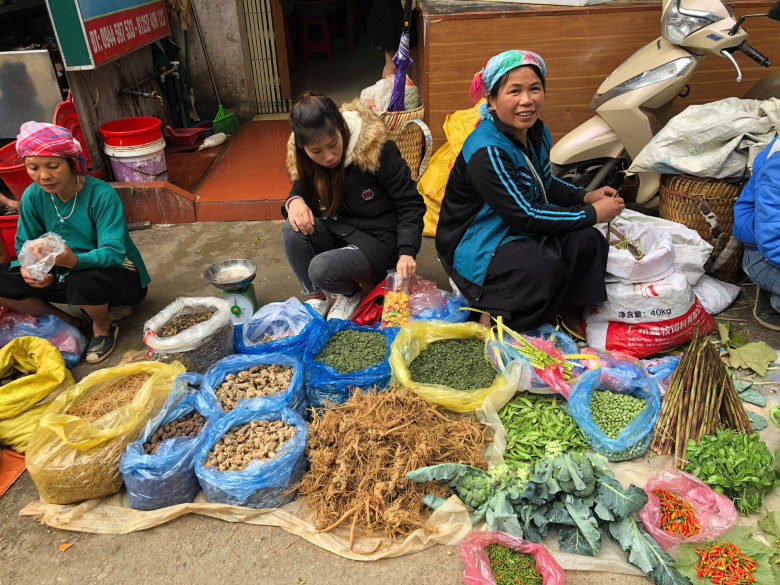
As visitors indulge in these culinary treats, they can sit around the steaming “thang co” pots, sip corn wine, and immerse themselves in the chilly highland climate, creating a sensory dining experience.
A “Living Museum” that Captivates Travelers
According to statistics, each Dong Van Market day attracts approximately 2,000–3,000 visitors, including both domestic and international tourists. The market’s cultural and culinary diversity transforms it into a “living museum,” offering a glimpse into the vibrant life of the highlands.
While the relocation to a new site has diminished the market’s antique ambiance, it continues to thrive as a cultural and culinary hub. The old market, with its imposing stone pillars, now stands as a relic, while the new market, though sturdily built, lacks the graceful charm of traditional architecture.
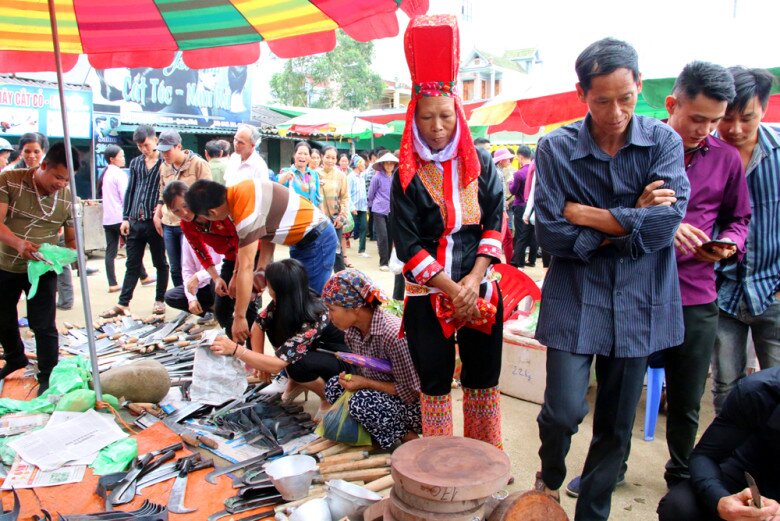
Visitors to the Dong Van Market not only come to shop but also to immerse themselves in the rich cultural tapestry of the highlands. They can pose for photos with locals donning colorful embroidered costumes, purchase handcrafted items ranging from linen bags to intricately designed silver jewelry, and listen to the stories behind each creation.
Additionally, visitors can explore the nearby Dong Van Ancient Town, located just 500 meters from the market. This ancient town, with its centuries-old earthen-wall houses, offers a deeper understanding of the unique architecture of the stone plateau region.
Tips for Visiting the Market
To fully immerse yourself in the Dong Van Market, it is advisable to arrive early, around 5 a.m., when the market is at its liveliest and the produce is freshest. Prices at the market are typically flexible, so friendly haggling is encouraged, especially when purchasing handcrafted items or local specialties.
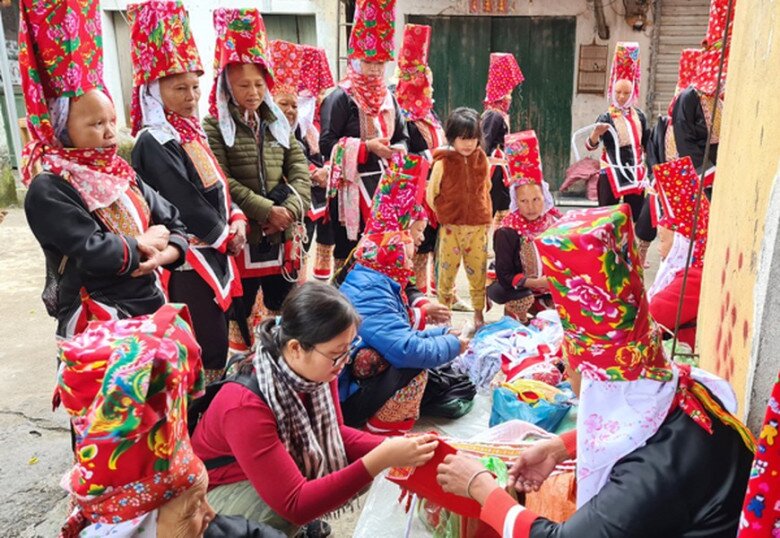
When buying local specialties, prioritize products with clear origins. For instance, authentic Ha Giang mint honey is usually light yellow, has a subtle fragrance, and is packaged in glass bottles. Avoid purchasing items of unclear provenance, especially those derived from endangered wildlife, as this violates conservation regulations.
For a more comprehensive experience, combine your market visit with nearby attractions such as Lung Cu Flag Tower or the Vuong Family Mansion. This will provide a deeper understanding of the region’s history and cultural heritage.
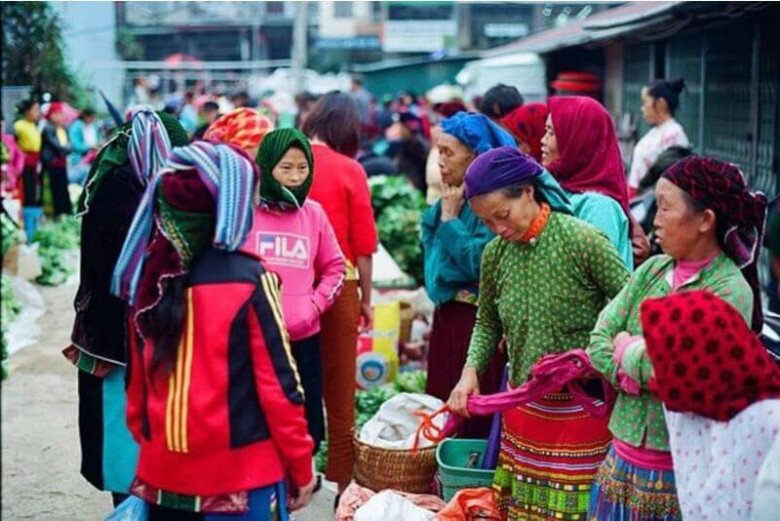
After nearly a century, the Dong Van Market remains not just a hub of commerce but also a cultural bridge connecting the ethnic groups of the highlands. Despite changes in location and architecture, it preserves its authentic spirit through its cuisine, costumes, and community way of life.
With its unique geographical setting and rich cultural heritage, the Dong Van Market is a must-visit destination on any exploration of the Ha Giang Stone Plateau. Each market day is not merely about buying and selling but also about preserving and celebrating traditional cultural values, ensuring their continued relevance in modern times.
‘The Tomato-Throwing Good Luck Ritual at the Market’ Proposed for Heritage Status
The unique tomato-throwing festival, known as Thanh Hoa’s Chuong Fair, is a vibrant event held in Thanh Hoa City, Vietnam. This energetic celebration, a proposal for recognition as a national intangible cultural heritage, involves a fun and messy tradition of participants playfully pelting each other with tomatoes. It is believed that this playful tradition brings good luck and fortune, and it has become a drawcard for tourists seeking an authentic and exciting cultural experience.




























